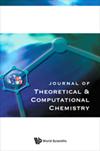纤维素Ⅱ和无定形链复合模型的热行为
IF 2.4
Q3 Computer Science
Journal of Theoretical & Computational Chemistry
Pub Date : 2020-06-15
DOI:10.1142/s0219633620400040
引用次数: 4
摘要
为了研究具有非晶态区和结晶区的纤维素ii复合模型的热行为,采用分子动力学模拟方法研究了纤维素ii、非晶态链及其组合模型的结构和性质。结果表明,非晶链比纤维素更容易受到温度的影响。在高温下可形成类似纤维素ii的反平行结构。在复杂模型中,无定形链的一端固定与纤维素ii形成氢键,而另一端不固定。在300 k时,非晶链的自由部分近似垂直于纤维素的轴向。当温度升高时,非晶链的自由部分粘附在纤维素表面。无定形链的游离部分不与纤维素形成氢键。无定形链的形成和表面的纤维素ii是一个拉链过程在450[公式:见文]k。此外,水分子渗透到无定形和结晶区域的间隙。水分子与复合模型之间形成氢键的概率小于8.21%,这就解释了纤维素不溶于水的原因。这些结论对纤维素溶解机理的研究具有指导意义。本文章由计算机程序翻译,如有差异,请以英文原文为准。
Thermal behavior of complex model with the cellulose II and amorphous chain
to investigate the thermal behavior of complex model with amorphous region and crystallization region of cellulose ii, the structures and properties of cellulose ii, amorphous chain and their combined models were studied by molecular dynamics simulation . the results showed that the amorphous chain is more susceptible to temperature than the cellulose ii. it can form anti- parallel structure similar to cellulose ii at high temperature . in the complex model , one end of the amorphous chain is fixed to form hydrogen bonds with the cellulose ii, and the other end is not. at 300[formula: see text]k, the free part of amorphous chain is approximately perpendicular to the axial direction of the cellulose ii. when the temperature increases, the free part of amorphous chain adheres to the surface of cellulose ii. the free part of amorphous chain did not form hydrogen bond with the cellulose ii. the formation of amorphous chain and surface of the cellulose ii is a zipper process at 450[formula: see text]k. furthermore, water molecules penetrate into the inter-space of the amorphous and crystalline regions. the probability of hydrogen bonds between water molecules and the complex model was less than 8.21% which explains why cellulose is insoluble in water. these conclusions provide a guiding significance for the dissolution mechanism of cellulose.
求助全文
通过发布文献求助,成功后即可免费获取论文全文。
去求助
来源期刊
CiteScore
1.70
自引率
0.00%
发文量
0
审稿时长
3 months
期刊介绍:
The Journal of Theoretical and Computational Chemistry (JTCC) is an international interdisciplinary journal aimed at providing comprehensive coverage on the latest developments and applications of research in the ever-expanding field of theoretical and computational chemistry.
JTCC publishes regular articles and reviews on new methodology, software, web server and database developments. The applications of existing theoretical and computational methods which produce significant new insights into important problems are also welcomed. Papers reporting joint computational and experimental investigations are encouraged. The journal will not consider manuscripts reporting straightforward calculations of the properties of molecules with existing software packages without addressing a significant scientific problem.
Areas covered by the journal include molecular dynamics, computer-aided molecular design, modeling effects of mutation on stability and dynamics of macromolecules, quantum mechanics, statistical mechanics and other related topics.

 求助内容:
求助内容: 应助结果提醒方式:
应助结果提醒方式:


